Brussels shuts the door on diversity: a European Parliament without young people and minorities
At the end of the 2019-2024 parliamentary term, the average MEP is a white male aged 54. Only three are under 30.
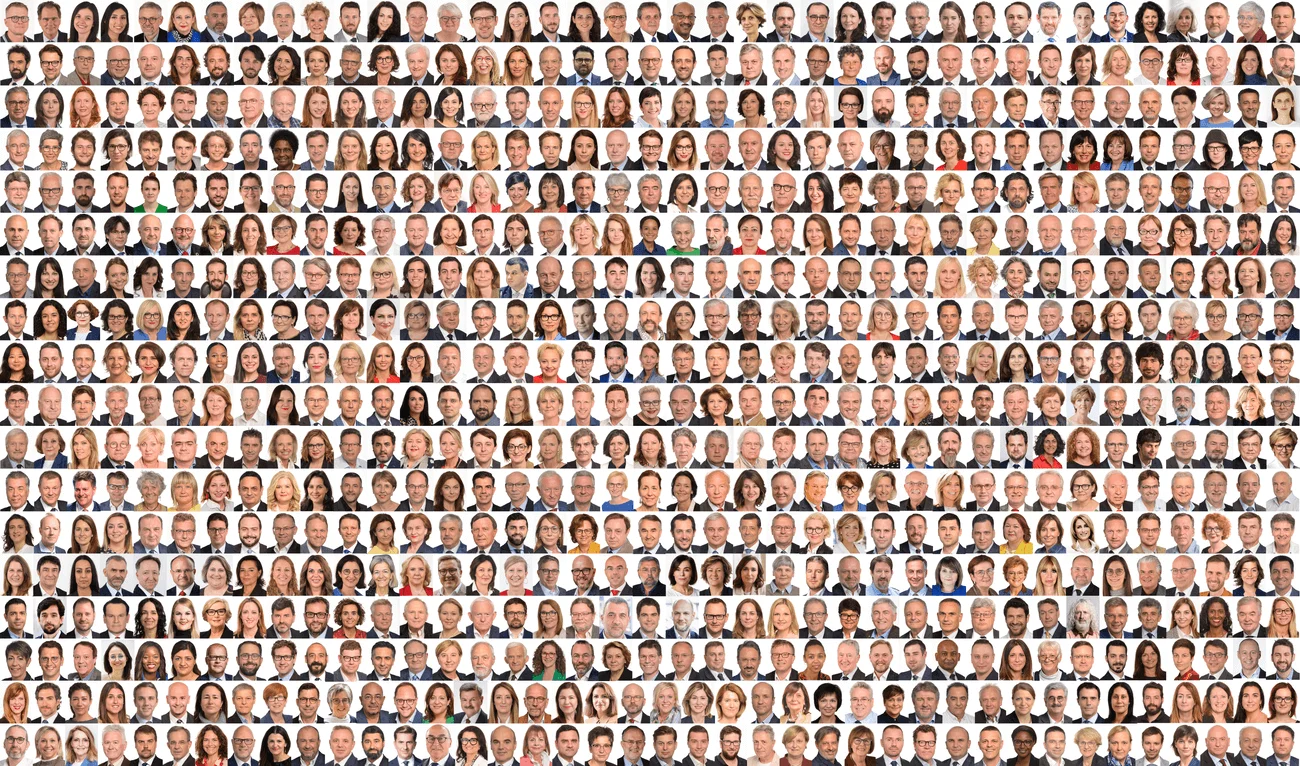
©El Orden Mundial
“United in diversity”. The motto of the European Union celebrates the wide variety of cultures, traditions and languages that make up the continent. The way in which the European Parliament represents them, however, is far from reflective of the composition of European society.
The average MEP in the current European Parliament (whose mandate will officially end in July) is a 54-year-old white male, while youth and ethnic minorities are barely present in Brussels, according to an analysis by El Orden Mundial in collaboration with the European Data Journalism Network.
Of the 705 MEPs, only three are under the age of 30 (0.4%) while in the EU as a whole this group accounts for 13% of the population, even if minors are excluded. Ethnic minorities make up just 4% of the chamber, compared to 10% of the European population.
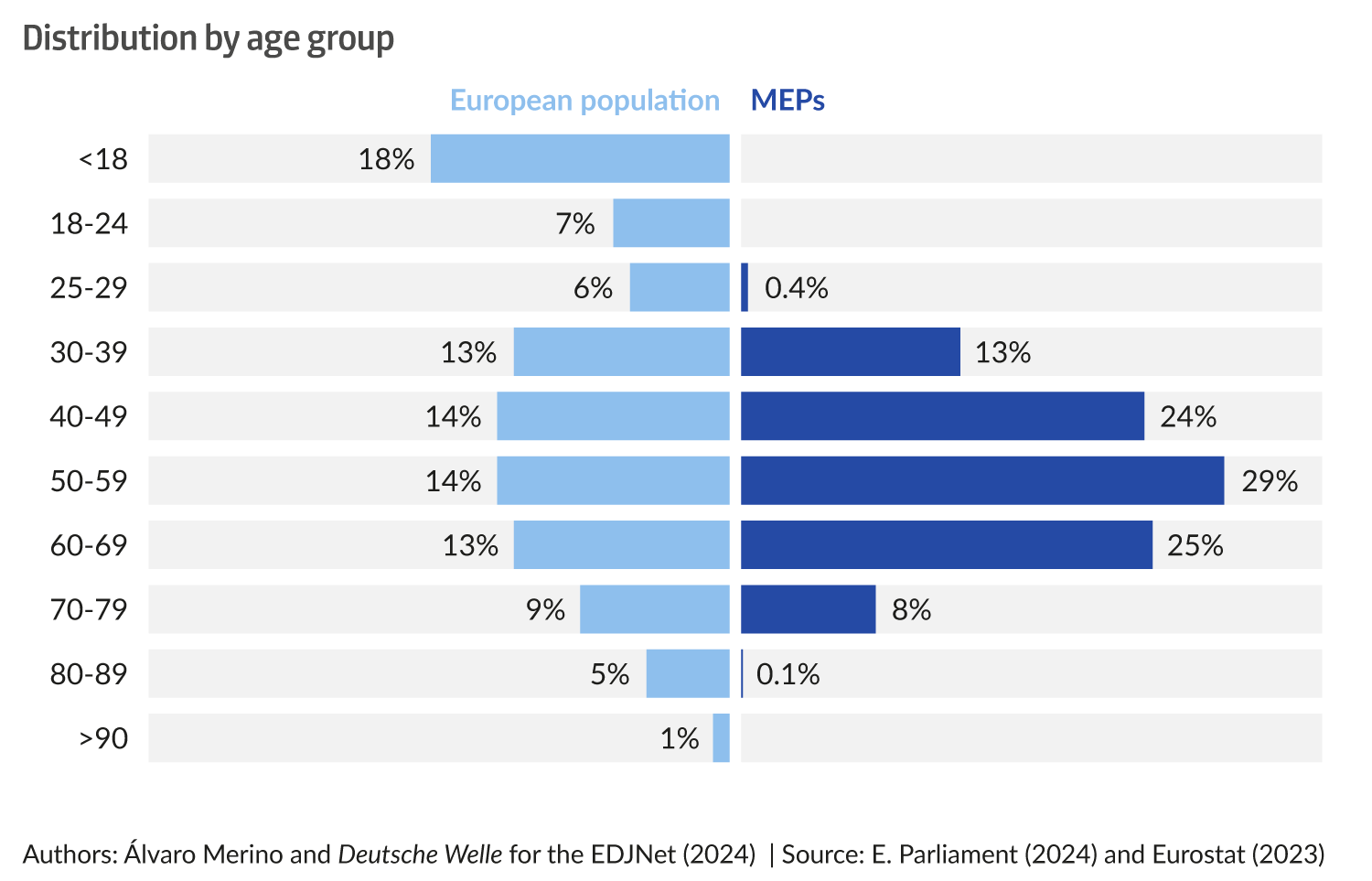
The same goes for people with disabilities, a group often overlooked but comprising more than a quarter of Europeans: only six MEPs, or 0.9%, say they have a disability.
Although women have managed to reach a 40% share over many years of progress, the number of men is still far higher – 425 compared to 280.
These are “alarming” figures, according to Alberto Alemanno, Professor of EU law at HEC Paris, who also points out that the transformation of the European Parliament is “a politico-cultural process that depends on the political parties”. However, the growth of the far right, the most male-centric and ageist ideological power in European politics, threatens to further homogenise the European Parliament and close its doors to diversity.
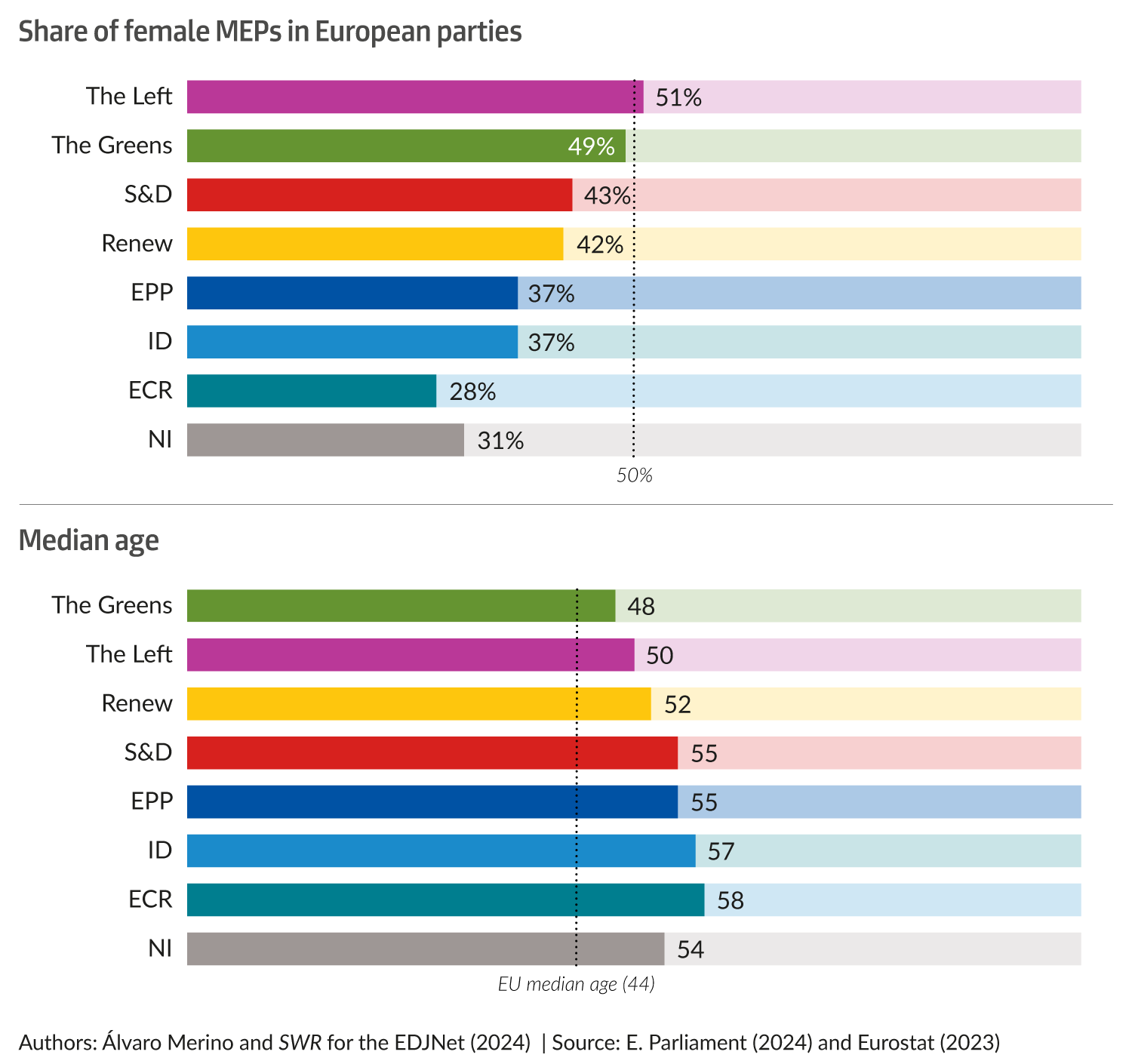
The European elephant’s graveyard
The generation of the crisis, Erasmus and the Euro, generation rent and the Fridays for Future generation, have no voice in Brussels. A quarter of MEPs are over 65, the retirement age set by most member states, while those under 30, the average age at which European women become mothers, are just three. There are twice as many men named Martin as there are under 30s.
For Nikoleta Yordanova, Professor of European Politics at Leiden University in the Netherlands, this imbalance is related to the image of the European Parliament as a “retirement place”. In the mind of a MEP, “if you want to do real politics, you go to the parliament of your country, where you influence national politics. In the European Parliament, you retire”.
Despite this, Yordanova notes that this conception is changing in some countries, such as France, where Brussels is beginning to be seen as “a springboard, a training ground”. The Spanish post-15M left, which came to the political forefront in the 2014 European elections, has recently fished in the European Parliament to elect two ministers: Sira Rego, Minister of Youth, and Ernest Urtasun, Minister of Culture, both from Sumar.
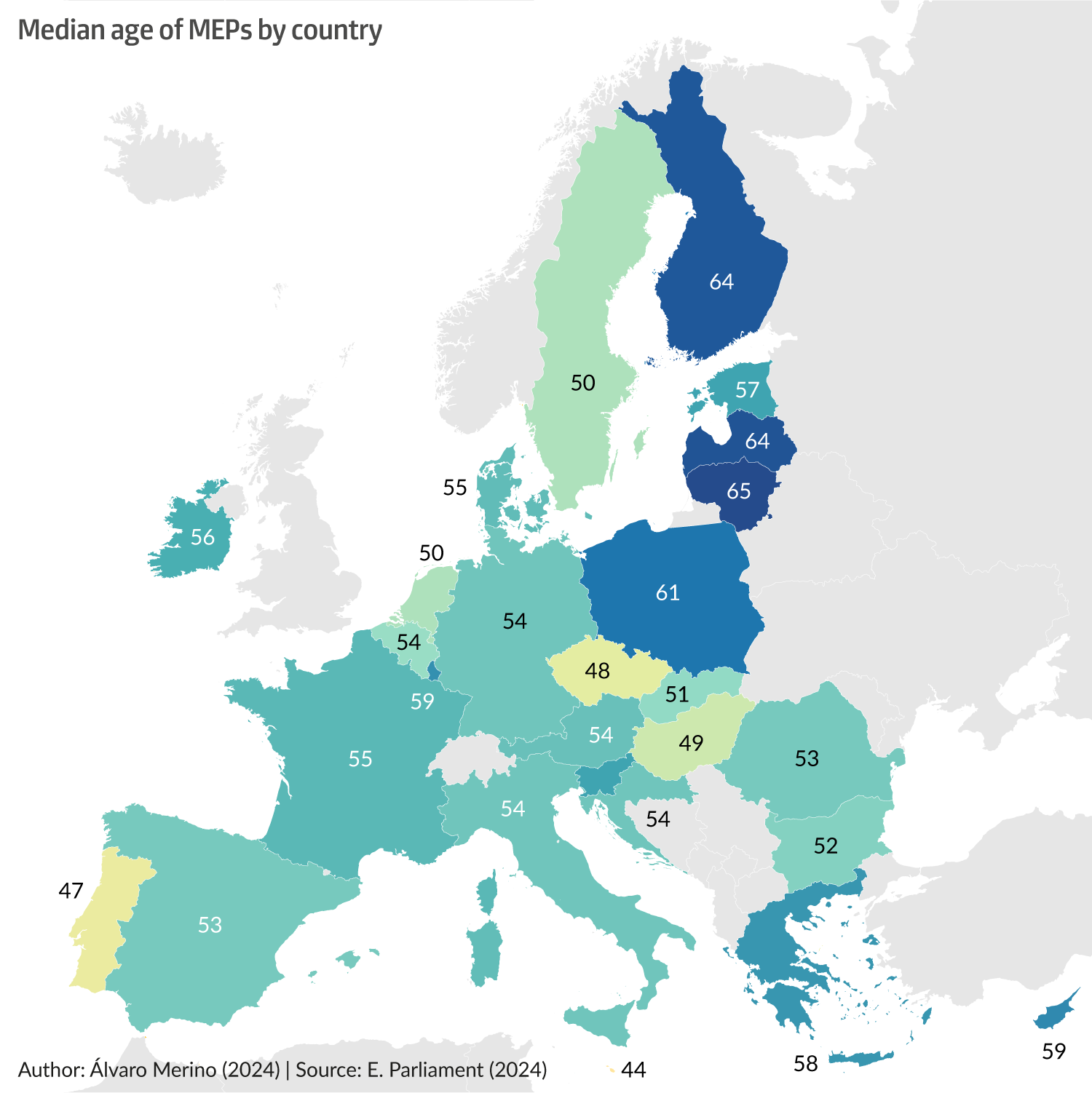
Beyond specific cases and the debate on whether the lack of real representation corresponds to a democratic malfunction, the absence of junior profiles is fed by low participation of young people in European elections: in 2019, 54% of those over 55 voted, compared to 42% of those under 25, according to a Eurobarometer study. And this is despite the historic mobilisation of young people that year, which increased their participation by 14 percentage points compared to 2014 and caused a green shift in European policies.
“For young people, EU elections are not important not because they lack civic engagement or willingness to change, but because they distrust the system”, says Fabiana Maraffa, EU policy officer at the European Youth Forum. According to her, it is key that young voters see their generation represented in the European Parliament: “It’s easier to believe that people similar to you can be actors of change. If young people get more involved, more people will think about joining and running for elected office”.
To run for European elections, young people must generally be 18, but in as many as nine countries – mostly in Eastern Europe – an average age of 21 is required, in Romania 23, and in Italy and Greece 25. By contrast, although the minimum voting age for EU elections is also generally 18, several countries have already lowered the age limit: in Austria, Malta, Germany and Belgium voters can go to the polls from the age of 16 and in Greece those aged 17 and over can vote.
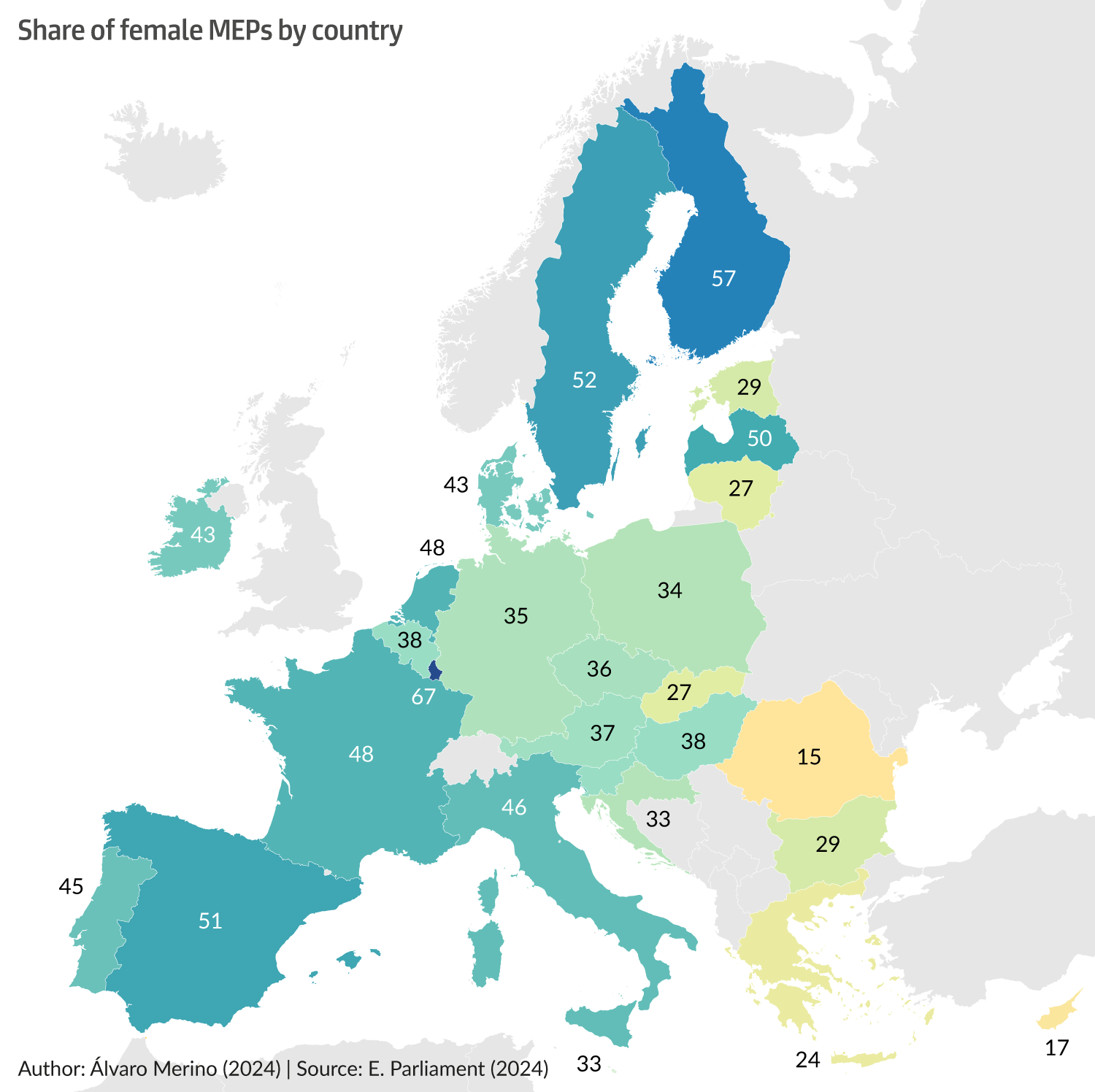
But the rejuvenation of European politics is incomparable with the commitment to gender equality, a top priority on the European agenda. In fact, the European Parliament boasts that it is “one of the most balanced parliaments in the world”. According to figures from its own communication service, 40% of women MEPs is higher than the EU average of 32% in national parliaments and the global average of 27%. Since in the first parliament of 1979 women held just 16% of seats, the increase has indeed been considerable.
However, 22 of the 27 member states still elect more male MEPs, and all but one of the European parties – The Left – have more men in their ranks. In the right-wing European People’s Party and the far-right ECR and Identity and Democracy, women’s representation amounts to just around a third of MEPs. They are also the oldest groups.
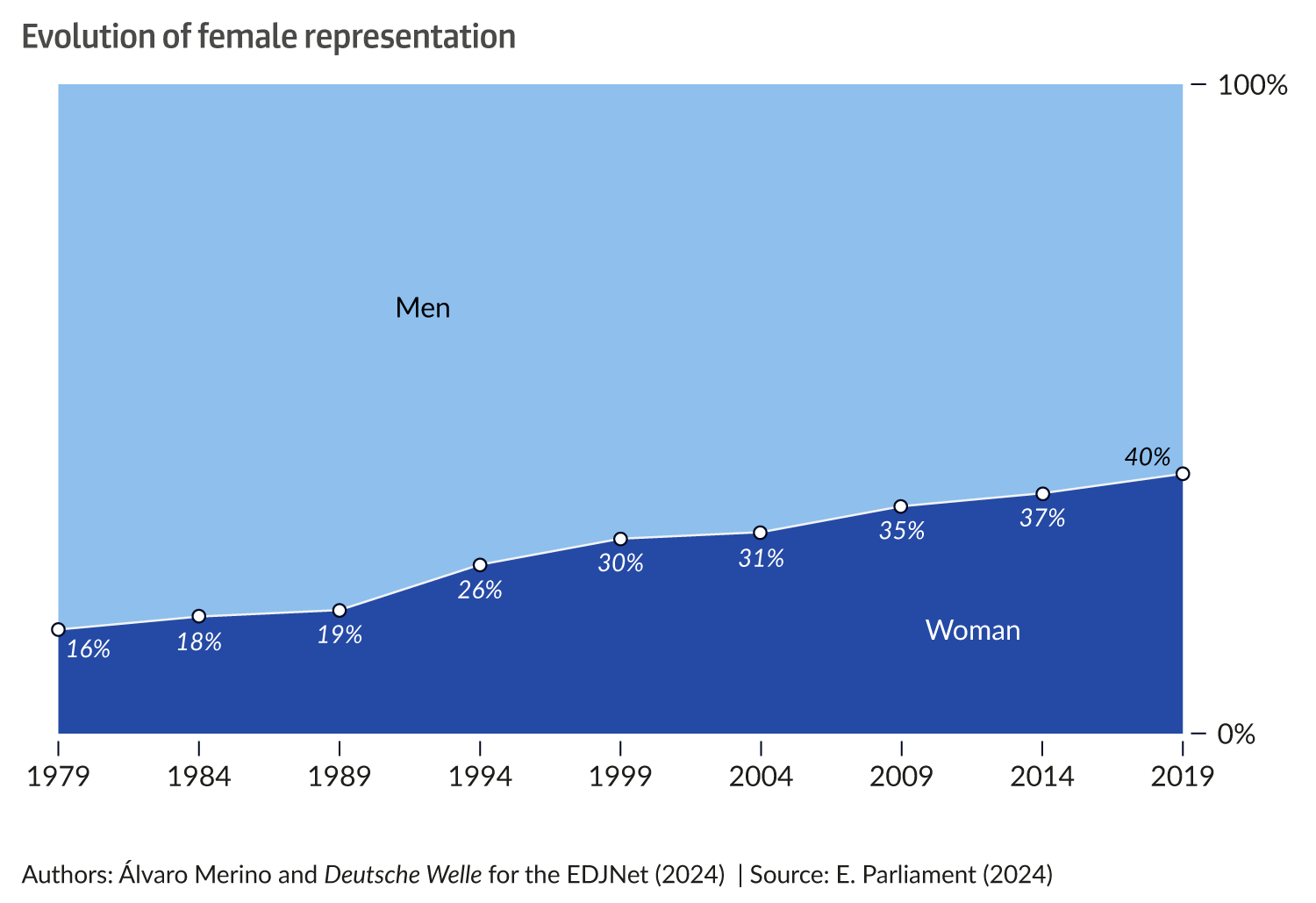
A Eurocentric chamber
The European Parliament building is a place where diversity actually prevails. Parliamentary assistants, canteen staff, cleaners; the workers reflect the variety of European society, with the exception of the MEPs. “There is a class dynamic”, says Tina Magazzini, researcher at the NGO Integrim Lab. “Some black female MEPs reported that at the beginning of their mandate they were often stopped by security forces at the entrance of the Parliament because their appearance did not fit the stereotype of a female MEP”, she says.
Neither the European Parliament nor most member states collect data on the ethnicity of their MEPs, so Integrim Lab and the European Network Against Racism (ENAR) decided to allow self-identification for those politicians “who explicitly identify themselves as non-white and/or those who were born in or have citizenship from countries in the global south”.
They found that, of 873 representatives who have passed through the European Parliament in the parliamentary term that is about to end, only 37 (4.3%) belonged to an ethnic minority. To put this in context, at least 10% of the European population comes from ethnic or racial minorities. “This mismatch makes us question the legitimacy of the policies adopted by the Parliament,” says Nourhene Mahmoudi, ENAR’s Policy and Advocacy Advisor.
By country, the United Kingdom – until its exit from the European Parliament in 2020 – and France have had the most ethnic minority MEPs between 2019 and 2024, with a quarter of their representatives each, while by party, the right is again the least diverse. The Identity and Democracy bench is entirely white and The Left is the only group where the number of ethnic minority MEPs is proportional to their weight in European society as a whole.
In the case of the LGBTQI+ community, data collection is complicated, as it depends on personal positions that are not always public, although Integrim Lab researcher Tina Magazzini points out that in the last legislature there has been “much more openness” compared to the previous mandate. “The discriminatory policies of the Hungarian and Polish governments ended up generating a reaction in this sense,” she explains. In terms of distribution across the Parliament, rainbow members are no longer concentrated in left-wing groups, but there are hardly any openly LGBTQI+ MEPs from Central and Eastern Europe.
Inaccessible seats
27% of Europeans claim to have some kind of disability, yet there are only six disabled members in the European Parliament. For Alejandro Moledo, Deputy Director and Policy Coordinator of the European Disability Forum, the problem is clear: “People with disabilities do not compete on equal terms in the European elections. He points to the lack of funding to overcome obstacles to accessibility, such as hiring sign language interpreters or adapted vehicles.
“If political parties receive public funding, we must guarantee by law that they meet certain minimum standards of accessibility,” said Moledo, who also pointed out that there are still European countries that do not guarantee the right to vote or stand as a candidate to people with intellectual or psychosocial disabilities or people under guardianship. Specifically, fifteen countries legally recognise the right to vote for all people with disabilities, without restrictions, but only ten guarantee their right to stand for election.
Thus, the next time an insurmountable lack of interest in European affairs is used to justify a low turnout in an EU election, one might ask whether in its legislative work the European Parliament talks more about the diversity of Europe, rather than representing it.
Original source: https://elordenmundial.com/mapas-y-graficos/bruselas-diversidad-europarlamento-sin-jovenes-ni-minorias/
